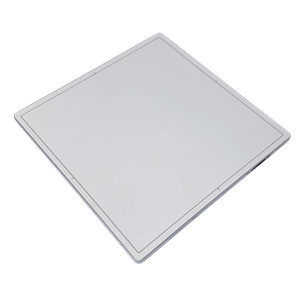Flat panel detectors play a crucial role in digital radiography (DR), as their image quality directly affects the accuracy and efficiency of diagnosis. The quality of flat panel detector images is usually measured by modulation transfer function (MTF) and quantum conversion efficiency (DQE). The following is a detailed analysis of these two indicators and the factors that affect DQE:
1、 Modulation Transfer Function (MTF)
Modulation Transfer Function (MTF) is the ability of a system to reproduce the spatial frequency range of an imaged object. It reflects the imaging system’s ability to distinguish image details. The ideal imaging system requires 100% reproduction of the details of the imaged object, but in reality, due to various factors, the MTF value is always less than 1. The larger the MTF value, the stronger the imaging system’s ability to reproduce the details of the imaged object. For digital X-ray imaging systems, to evaluate their inherent imaging quality, it is necessary to calculate the pre sampled MTF that is not subjectively affected and inherent to the system.
2、 Quantum Conversion Efficiency (DQE)
Quantum Conversion Efficiency (DQE) is an expression of the transmission capability of imaging system signals and noise from input to output, expressed as a percentage. It reflects the sensitivity, noise, X-ray dose, and density resolution of the flat panel detector. The higher the DQE value, the stronger the detector’s ability to distinguish differences in tissue density.
Factors affecting DQE
Coating of scintillation material: In amorphous silicon flat panel detectors, the coating of scintillation material is one of the important factors affecting DQE. There are two common types of scintillator coating materials: cesium iodide (CsI) and gadolinium oxysulfide (Gd ₂ O ₂ S). Cesium iodide has a stronger ability to convert X-rays into visible light than gadolinium oxysulfide, but at a higher cost. Processing cesium iodide into a columnar structure can further enhance the ability to capture X-rays and reduce scattered light. The detector coated with gadolinium oxysulfide has a fast imaging rate, stable performance, and lower cost, but its conversion efficiency is not as high as that of cesium iodide coating.
Transistors: The way in which visible light generated by scintillators is converted into electrical signals can also affect DQE. In flat panel detectors with the structure of cesium iodide (or gadolinium oxysulfide)+thin film transistor (TFT), the array of TFTs can be made as large as the area of the scintillator coating, and visible light can be projected onto the TFT without undergoing lens refraction, with no photon loss in between, resulting in a relatively high DQE. In amorphous selenium flat panel detectors, the conversion of X-rays into electrical signals depends entirely on the electron hole pairs generated by the amorphous selenium layer, and the level of DQE depends on the ability of the amorphous selenium layer to generate charges.
In addition, for the same type of flat panel detector, its DQE varies at different spatial resolutions. The extreme DQE is high, but it does not mean that DQE is high at any spatial resolution. The calculation formula for DQE is: DQE=S ² × MTF ²/(NPS × X × C), where S is the average signal intensity, MTF is the modulation transfer function, X is the X-ray exposure intensity, NPS is the system noise power spectrum, and C is the X-ray quantum coefficient.
3、 Comparison of Amorphous Silicon and Amorphous Selenium Flat Panel Detectors
The measurement results of international organizations indicate that compared to amorphous silicon flat panel detectors, amorphous selenium flat panel detectors have excellent MTF values. As the spatial resolution increases, the MTF of amorphous silicon flat panel detectors rapidly decreases, while amorphous selenium flat panel detectors can still maintain good MTF values. This is closely related to the imaging principle of amorphous selenium flat panel detectors that directly convert incident invisible X-ray photons into electrical signals. Amorphous selenium flat panel detectors do not produce or scatter visible light, therefore they can achieve higher spatial resolution and better image quality.
In summary, the image quality of flat panel detectors is affected by various factors, among which MTF and DQE are two important measurement indicators. Understanding and mastering these indicators and the factors that affect DQE can help us better select and use flat panel detectors, thereby improving imaging quality and diagnostic accuracy.
Post time: Dec-17-2024



